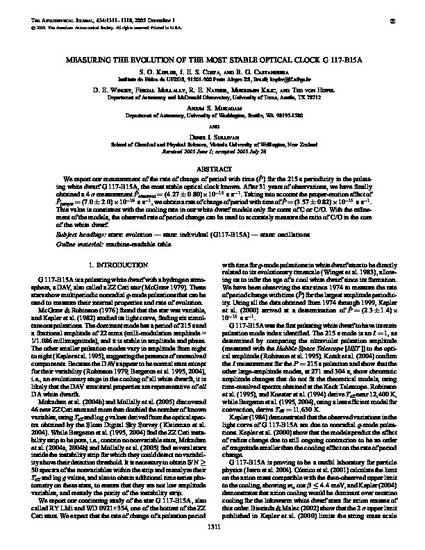
Article
Measuring the Evolution of the Most Stable Optical Clock G 117-B15A
The Astrophysical Journal
Submitting Campus
Daytona Beach
Department
Physical Sciences
Document Type
Article
Publication/Presentation Date
12-1-2005
Disciplines
Abstract/Description
We report our measurement of the rate of change of period with time () for the 215 s periodicity in the pulsating white dwarf G 117-B15A, the most stable optical clock known. After 31 years of observations, we have finally obtained a 4 σ measurement observed = (4.27 ± 0.80) × 10-15 s s-1. Taking into account the proper-motion effect of proper = (7.0 ± 2.0) × 10-16s s-1, we obtain a rate of change of period with time of = (3.57 ± 0.82) × 10-15 s s-1. This value is consistent with the cooling rate in our white dwarf models only for cores of C or C/O. With the refinement of the models, the observed rate of period change can be used to accurately measure the ratio of C/O in the core of the white dwarf.
Publisher
Institute of Physics Publishing, Inc.
Grant or Award Name
Partially supported by grants from CNPq (Brazil), FINEP (Brazil), NSF (USA), and NASA (USA)
Citation Information
S. O. Kepler, Ted von Hippel and et al.. "Measuring the Evolution of the Most Stable Optical Clock G 117-B15A" The Astrophysical Journal Vol. 634 Iss. 2 (2005) p. 1131 - 1318 Available at: http://works.bepress.com/ted-vonhippel/69/
Dr. von Hippel was not affiliated with Embry-Riddle Aeronautical University at the time this paper was published.